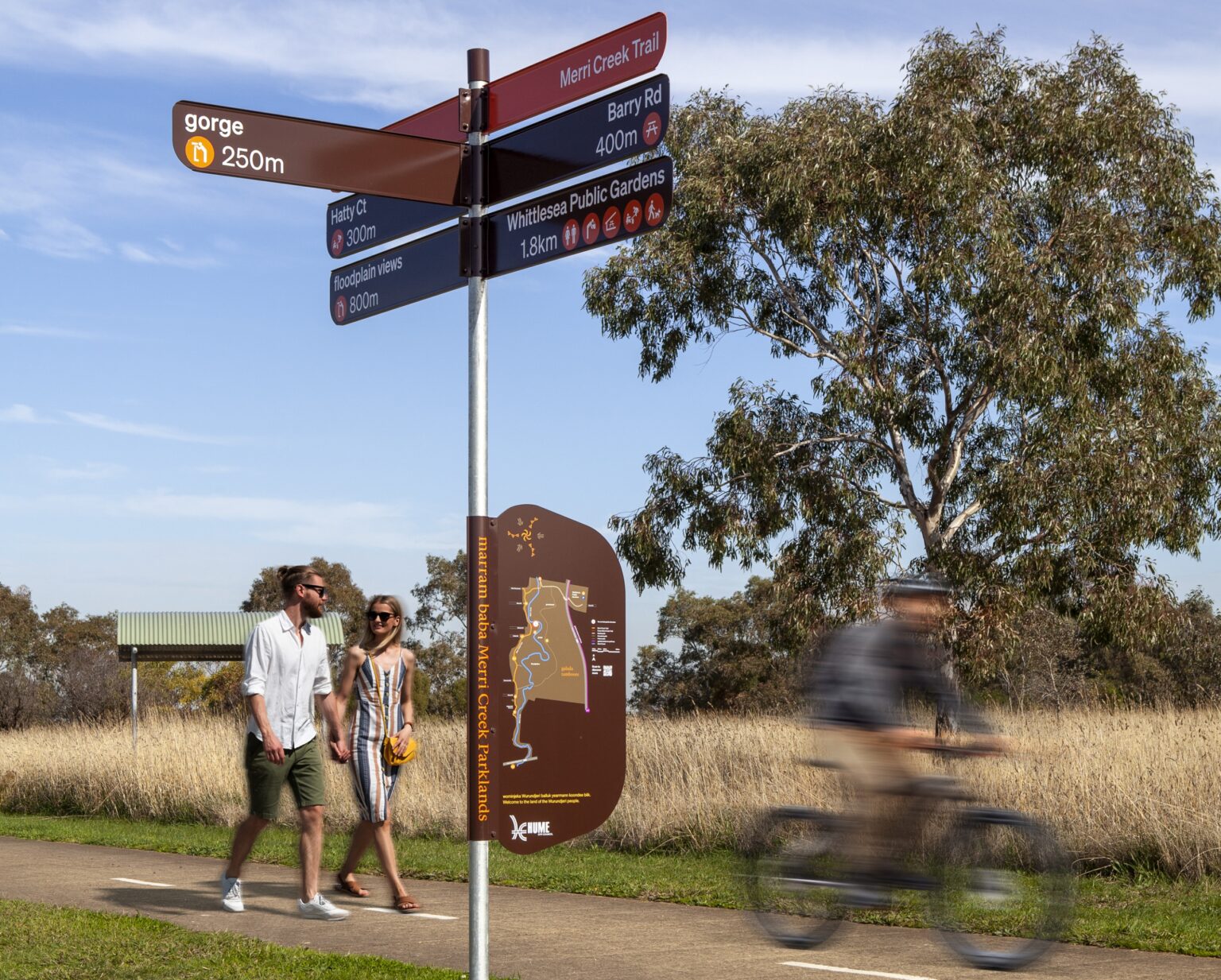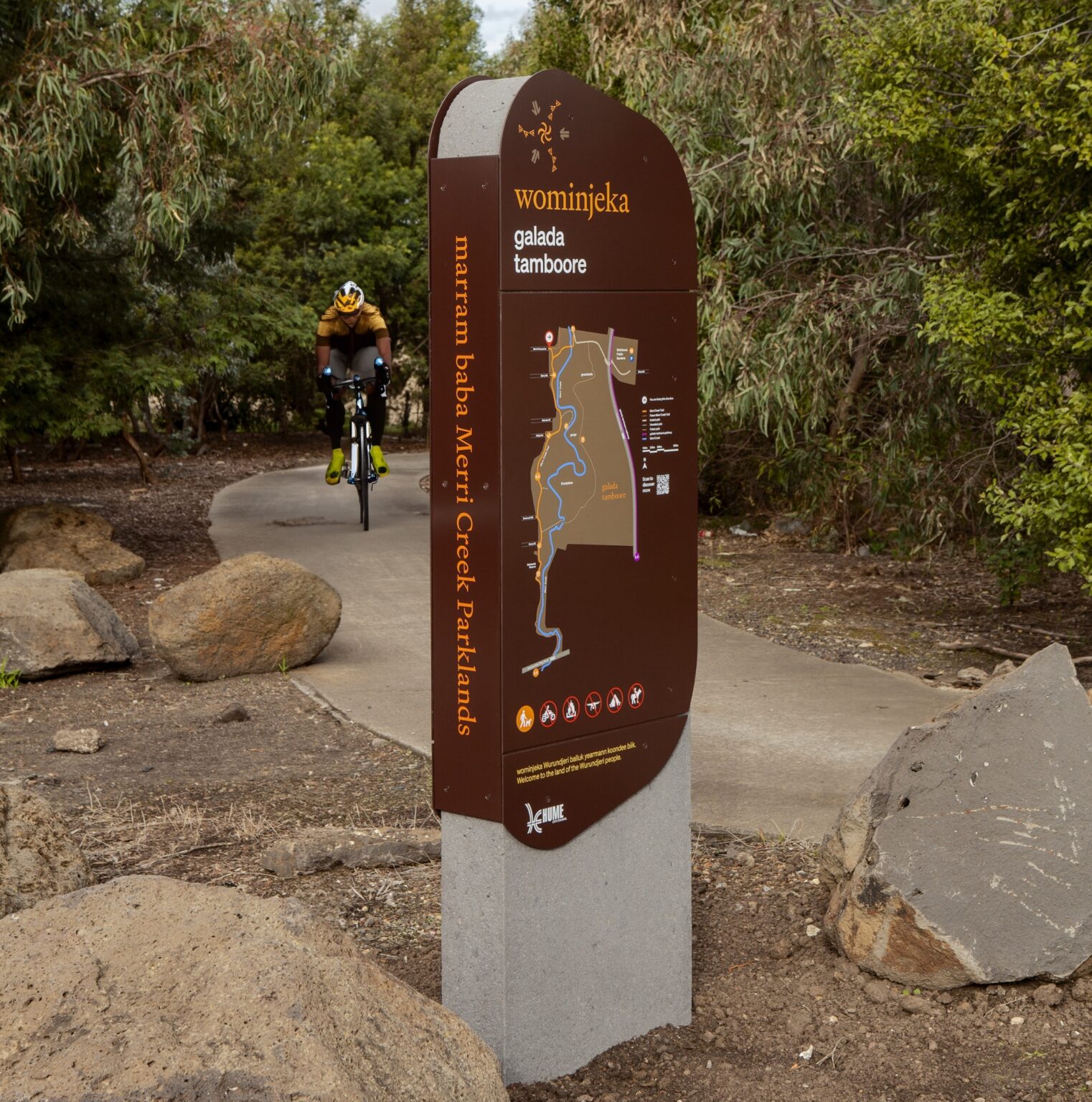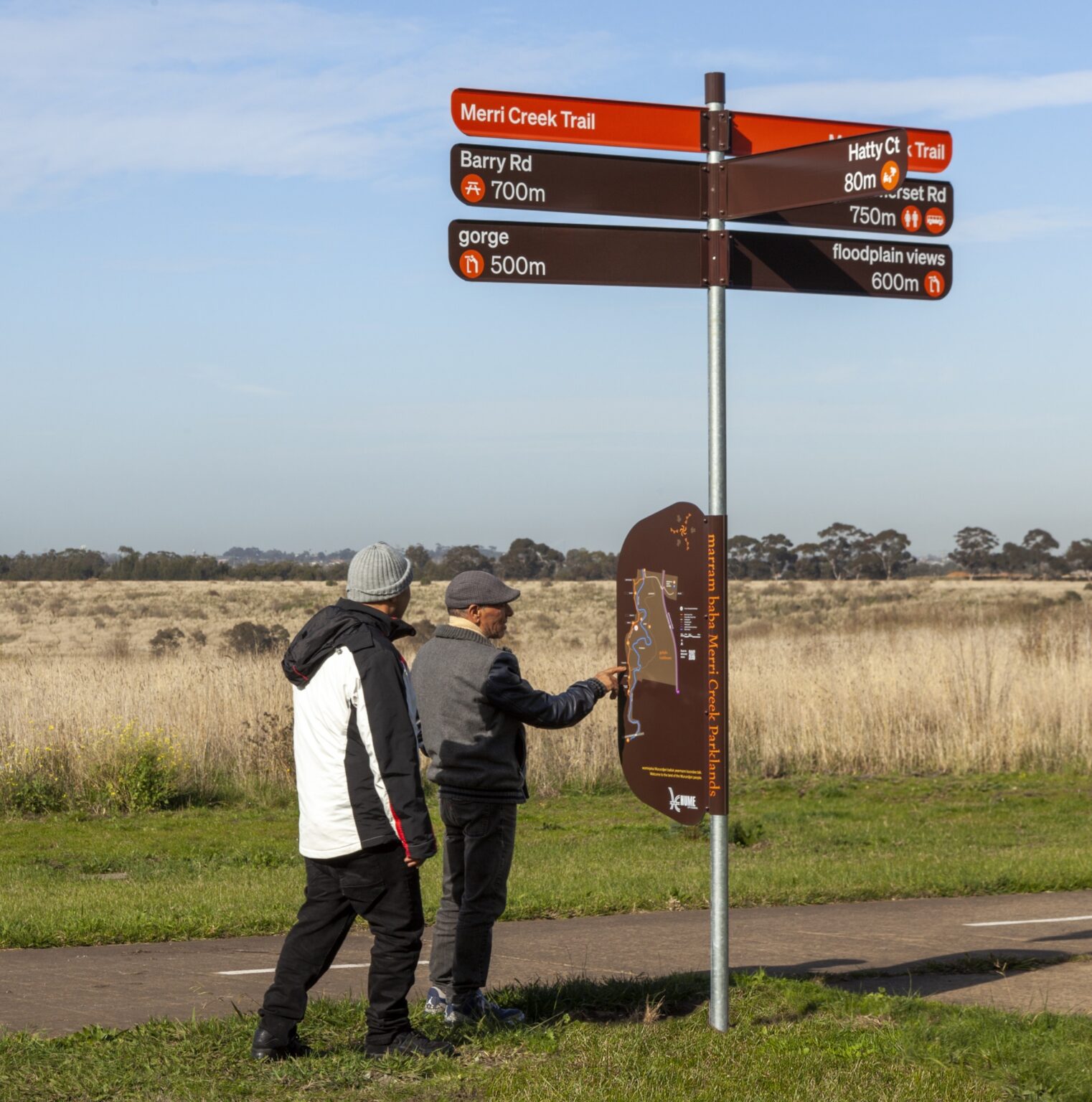A connection to culture
The marram baba Merri Creek Parklands is a 2,778-hectare parkland spanning from Craigieburn to Beveridge, providing much-needed green open space for the growing communities in Melbourne’s north. The parklands protect biodiversity and cultural heritage areas and include new facilities to support walking, cycling trails, viewing platforms and picnic areas.
Diadem was engaged by the Victorian State Government and the Merri Creek Management Committee to create a signage and wayfinding system for Stage 1 of the parkland’s gradual expansion, which is planned to continue until 2050.






